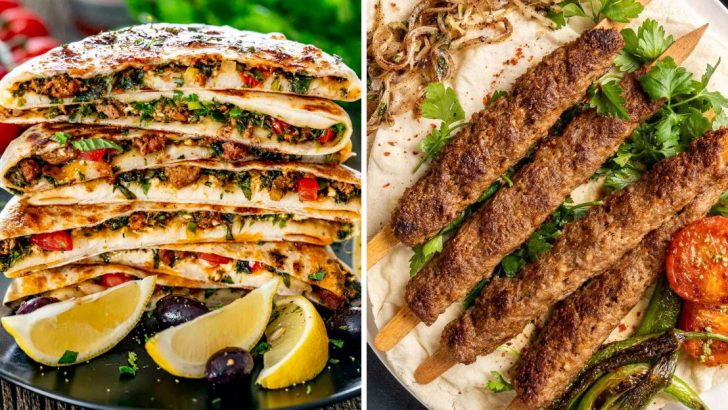Turkish cuisine has a way of turning any meal into an unforgettable celebration of flavor. Rich spices, tender meats, and vibrant vegetables come together in dishes that demand attention.
Each recipe carries centuries of tradition and the warmth of generous hospitality. Here are 20 Turkish specialties guaranteed to outshine everything else on the table.
1. Kebabs
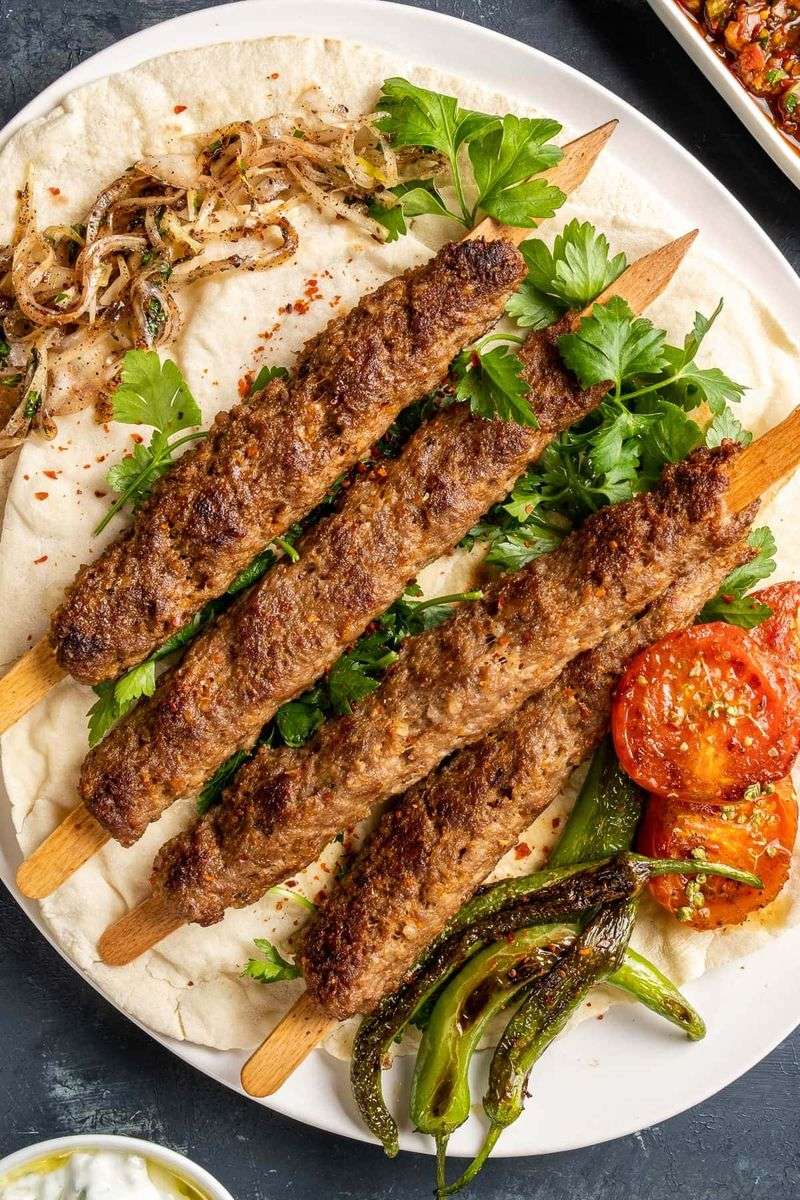
Sizzling skewers of marinated meat have defined Turkish dining for centuries! The secret? Perfectly balanced spices and that unmistakable smoky char from open flames. Most tourists only know döner kebab (the vertical rotating meat), but true kebab culture runs deeper.
Local masters hand-mince lamb with fat, onions, and peppers for Adana kebab, named after its hometown. The şiş version features chunky meat cubes, while patlıcan kebab alternates eggplant with meat.
2. Manti
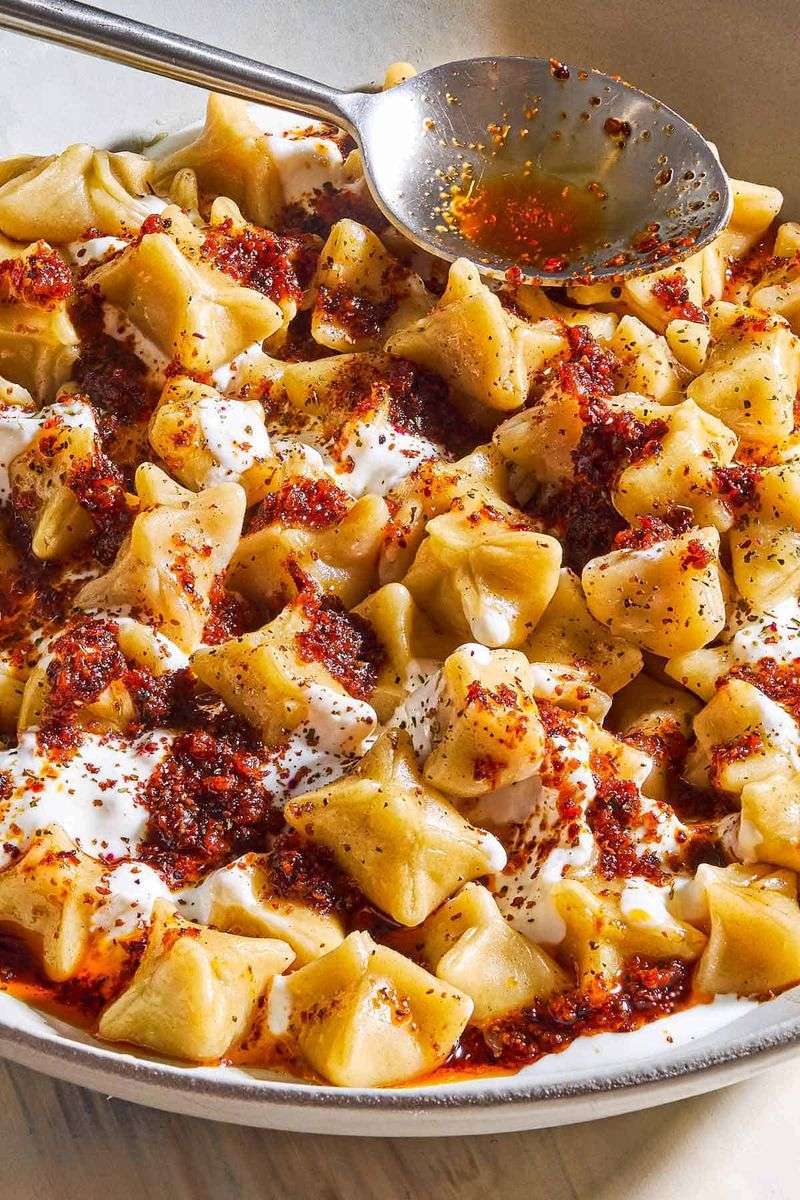
Grandmothers across Turkey gather around tables to pinch these miniature dumplings into existence – some barely larger than a fingernail! The dough pockets cradle spiced lamb or beef, then get boiled to tender perfection.
What transforms manti from good to magnificent? The toppings: garlicky yogurt sauce, sizzling paprika butter, and dried mint create a symphony of flavors. Regional variations abound, with some cities claiming their style (smaller, larger, steamed, or fried) reigns supreme.
3. Baklava
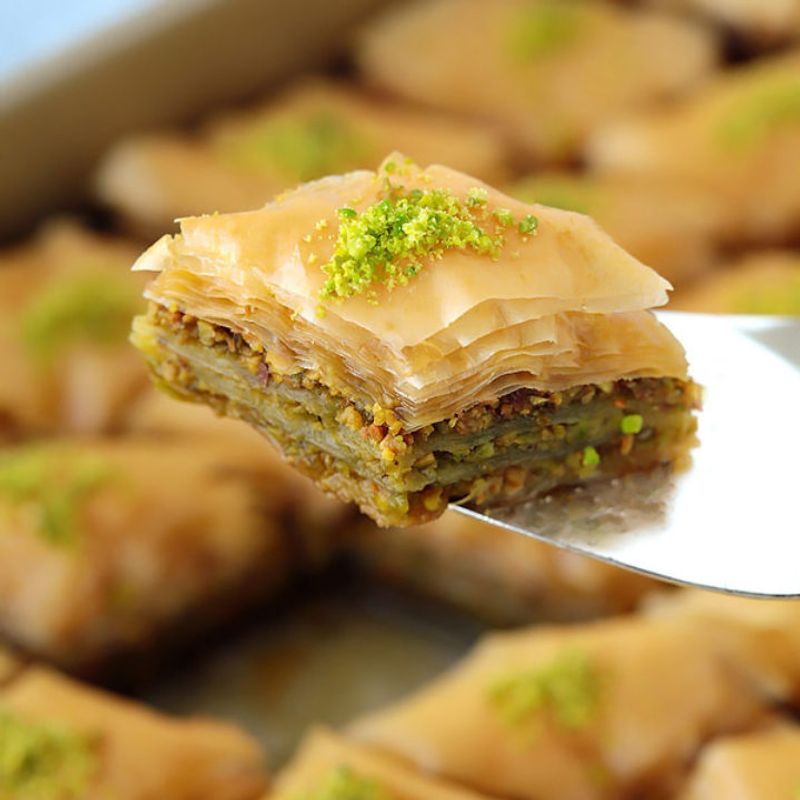
Forty layers of paper-thin phyllo dough! That’s what master baklava makers achieve when crafting this legendary sweet treat. Each translucent sheet gets brushed with clarified butter before being stacked into a towering pastry monument.
Crushed pistachios, walnuts, or hazelnuts nestle between the layers, providing earthy contrast to the floral syrup that soaks the finished pastry. The city of Gaziantep produces Turkey’s most prized baklava, using local pistachios so vibrant they’re almost neon green.
4. Lahmacun
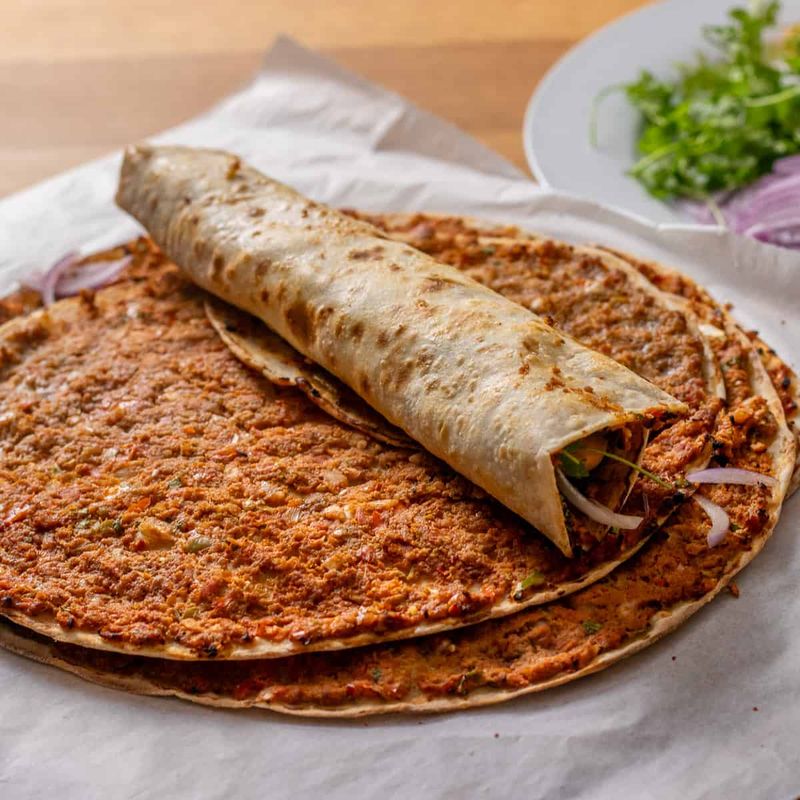
Forget everything you know about pizza – lahmacun rewrote the rulebook centuries ago! Paper-thin dough stretched to impossibly large circles gets topped with a paste of minced lamb, tomatoes, peppers, and a secret blend of spices before flash-cooking in wood-fired ovens.
Locals squeeze lemon juice over the crispy creation, scatter fresh parsley across it, then roll the entire disc into a portable flavor torpedo. Street vendors produce these at lightning speed, somehow maintaining perfect uniformity despite the chaotic pace.
5. Menemen
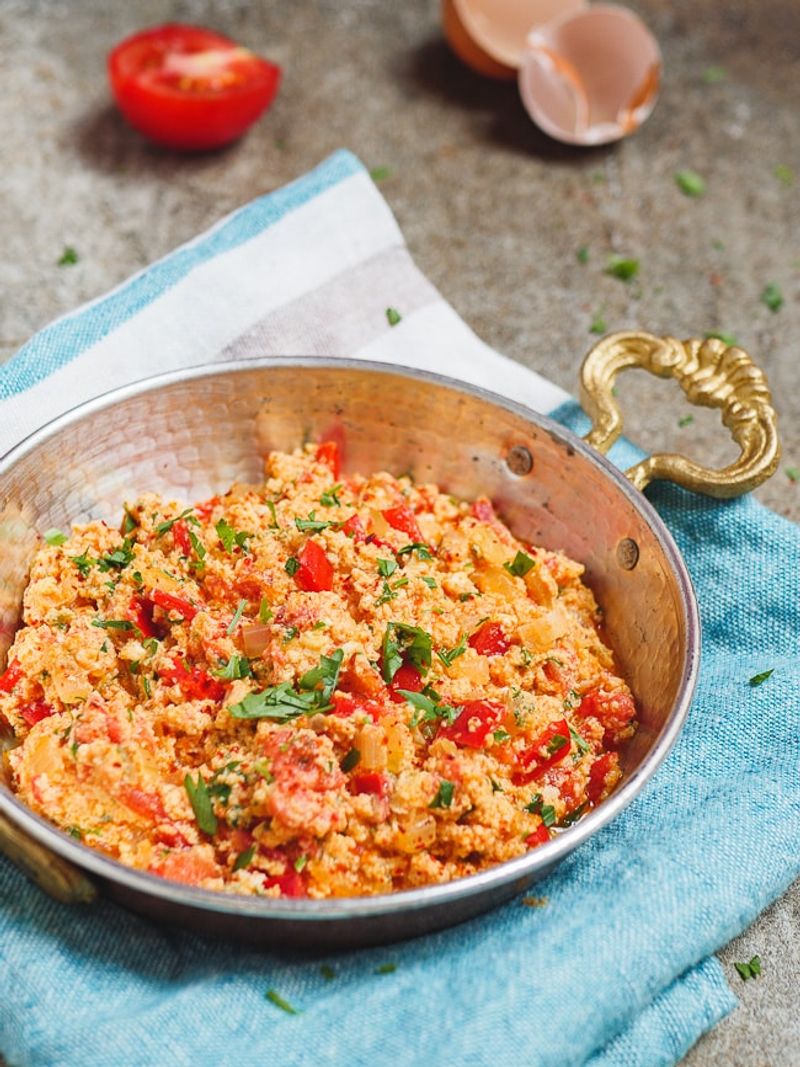
Morning arguments erupt across Turkey over one crucial question: should menemen contain onions? This beloved breakfast scramble ignites passionate debate despite its humble ingredients – just eggs, tomatoes, peppers, and (controversially) onions cooked in a special wide pan.
The technique makes menemen magical – tomatoes slowly concentrate into jammy sweetness before eggs get gently folded in, creating a texture somewhere between scrambled eggs and savory custard. Copper pans, heated over dancing flames, develop deep flavor impossible to replicate in modern cookware.
6. Pide

Shaped like ancient Anatolian fishing vessels, these oblong flatbreads cradle toppings in their hollow centers like precious cargo! Bakers pinch the edges upward to create the distinctive boat shape before sliding the dough into roaring wood-fired ovens.
The fillings range from simple cheese mixtures to complex combinations of spiced meat, vegetables, and eggs. Watch for the moment a freshly baked pide emerges – bakers crack an egg on top, letting residual heat transform it into a molten gold treasure.
7. Dolma
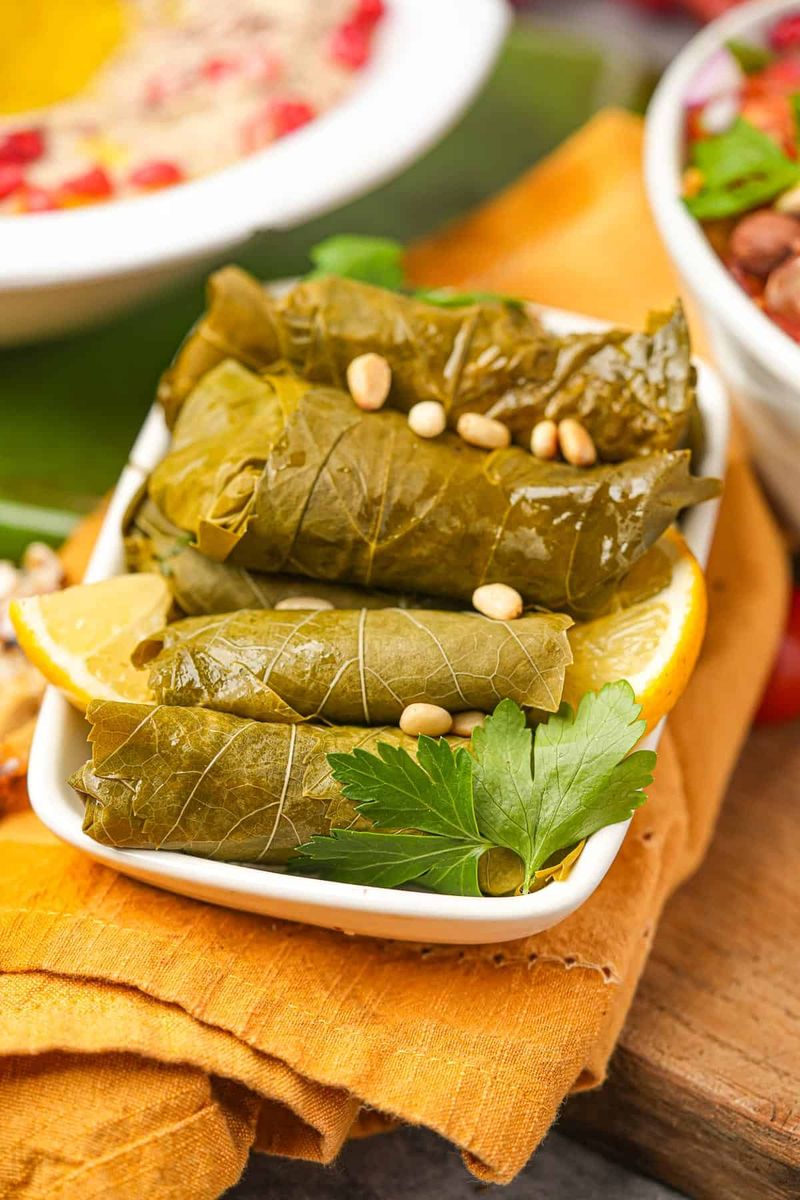
Grape leaves twisted into tiny parcels holding secret treasures inside – dolma exemplifies Turkish cuisine’s waste-nothing philosophy! Hollowed-out vegetables become vessels for spiced rice mixtures studded with pine nuts, currants, and fresh herbs.
Families guard dolma recipes like precious heirlooms, with technique passed down through generations of women who gather for hours of preparation and gossip. The word “dolma” literally means “stuffed thing,” but locals distinguish between cold vegetarian versions (zeytinyağlı) and warm meat-filled varieties.
8. Köfte
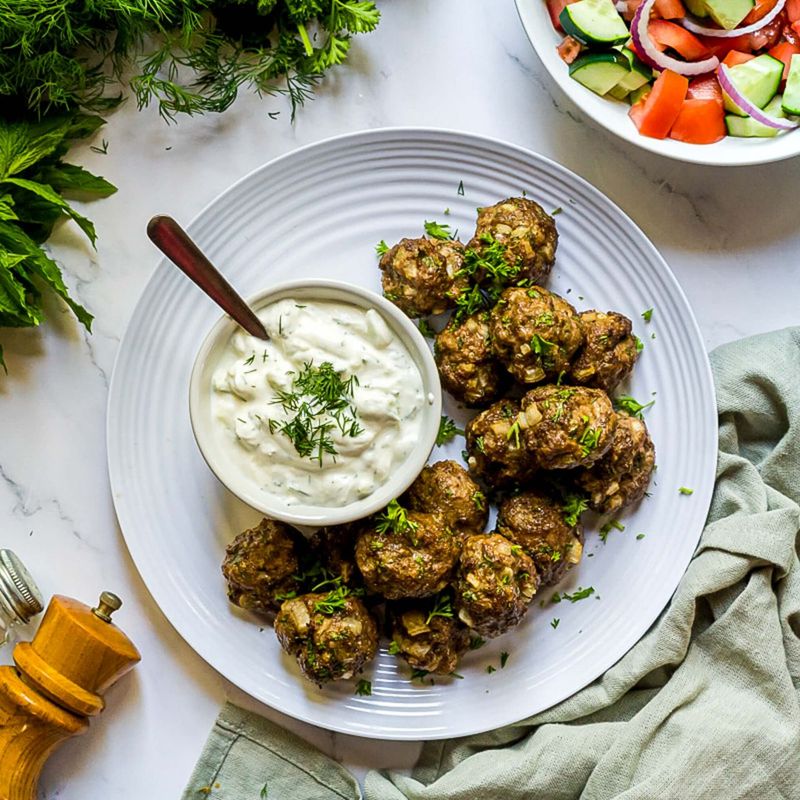
Butchers pound their chests with pride when discussing their köfte recipes! These hand-formed meat patties might look simple, but they represent culinary alchemy – the perfect balance of fat, spice, and texture that’s been perfected over centuries.
Regional variations number in the dozens: İnegöl köfte maintains a springy texture, İzmir köfte bathes in tomato sauce, and Tekirdağ köfte incorporates bread for lightness. The meat gets kneaded with onions, parsley, and secret spice blends until it develops a sticky consistency.
9. İmam Bayıldı
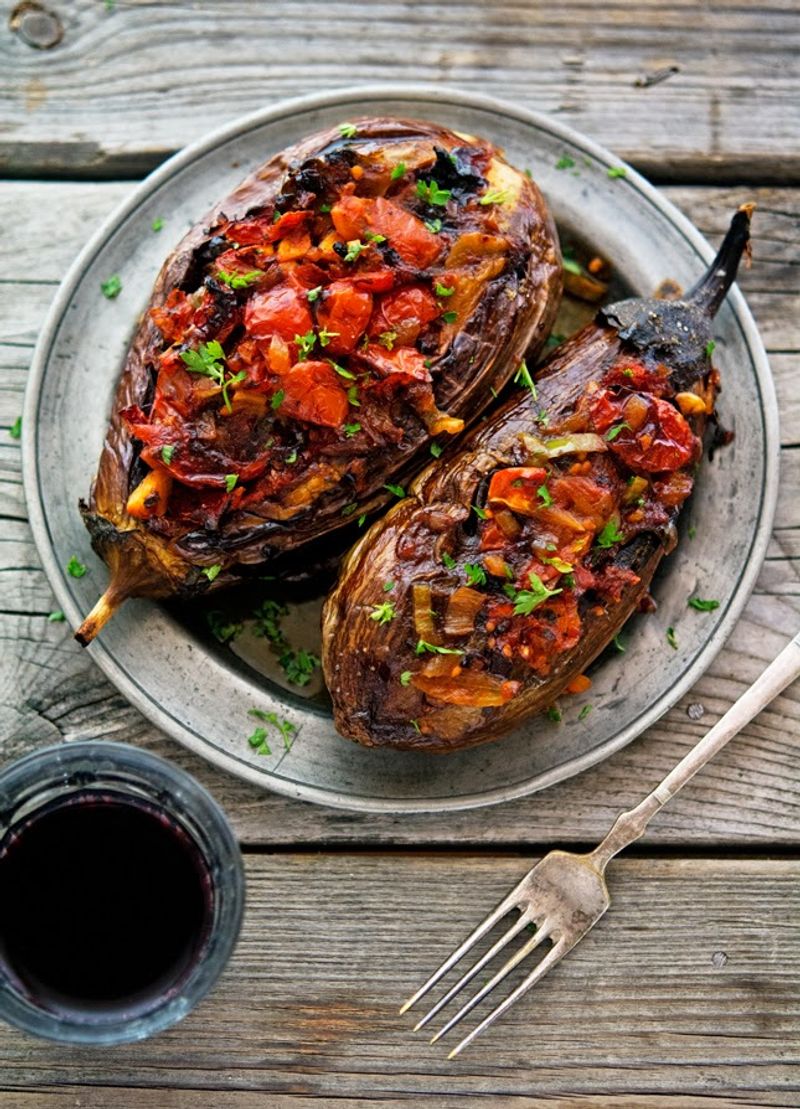
Legend claims an imam (religious leader) literally fainted from pleasure after tasting this olive oil-drenched eggplant dish! Whether true or not, the name “imam bayıldı” (the imam fainted) perfectly captures its swoon-worthy flavors.
Whole eggplants get partially split, stuffed with a garlicky tomato-onion mixture, then slowly braised in olive oil until they collapse into silky submission. The key technique involves salting the eggplants first to draw out bitterness and help them absorb the fragrant oil.
10. Künefe
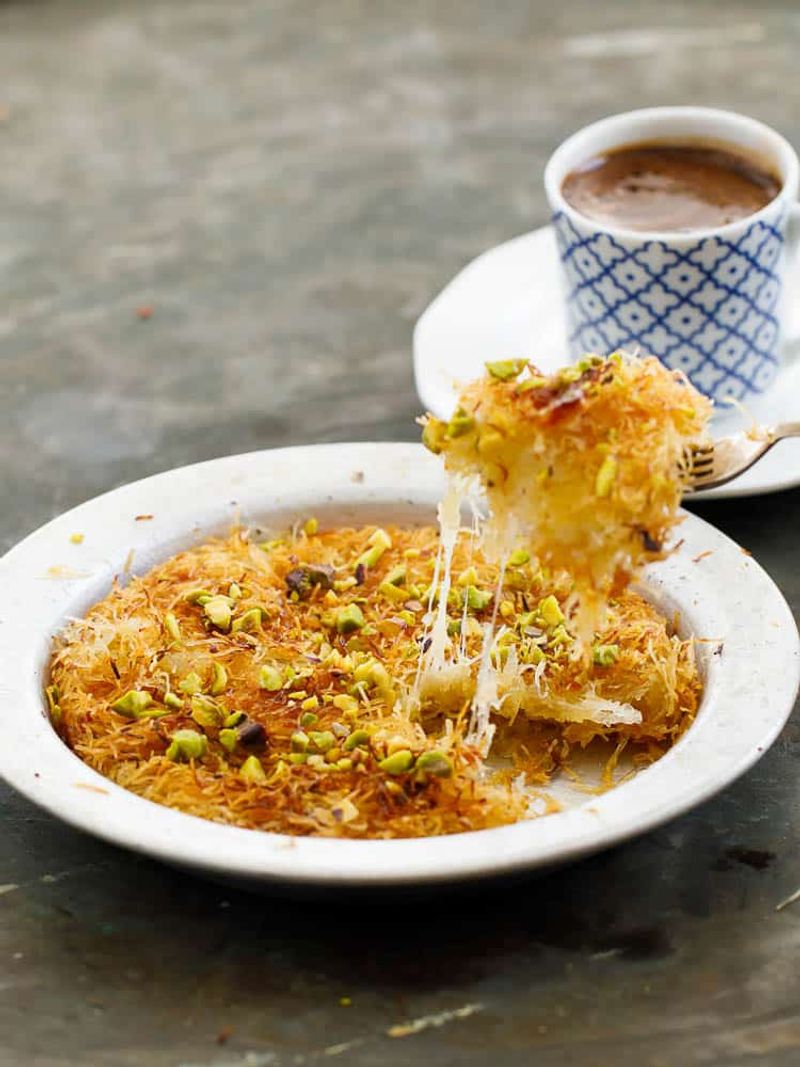
Shredded wheat pastry hiding stretchy cheese inside? Künefe brilliantly blurs the line between savory and sweet! This theatrical dessert arrives at tables bubbling hot, often still in the metal pan it was cooked in.
Pastry masters layer kadayıf (fine shredded phyllo) with unsalted cheese, then soak the creation in sugar syrup infused with lemon and rose water. The textural contrast between crisp exterior and molten cheese center creates an addictive eating experience.
11. Çiğ Köfte
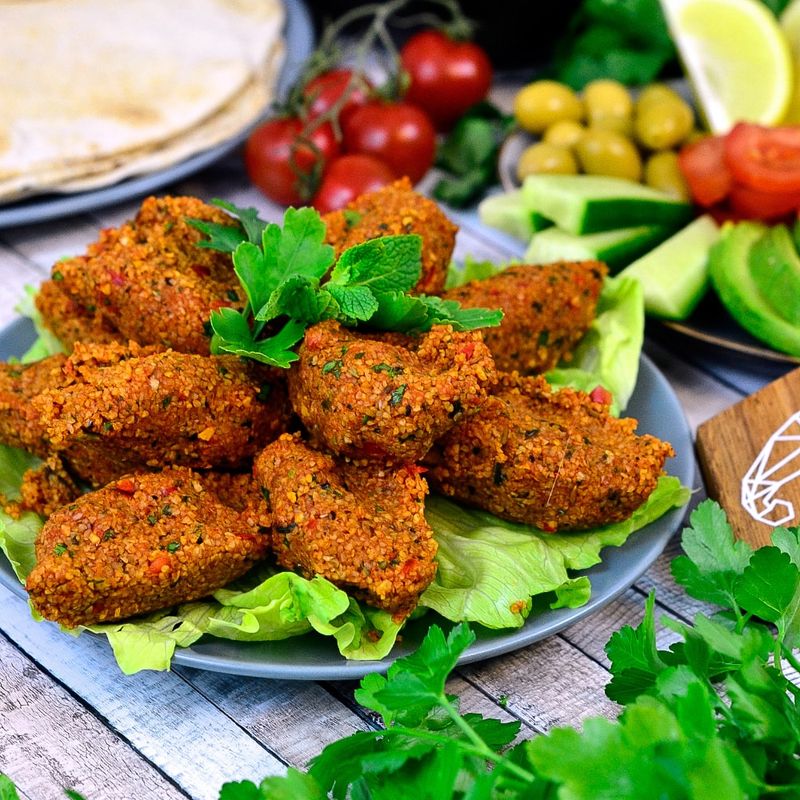
Bare-handed kneading for hours until your arms ache – that’s the traditional preparation for çiğ köfte! Originally made with raw meat (hence the name “raw meatball”), modern versions use bulgur wheat instead, making this spicy treat safely vegetarian.
The intense kneading process releases starches that bind the mixture together without cooking. Isot pepper (Turkish black pepper) gives the dish its distinctive maroon color and building heat that sneaks up on unsuspecting eaters.
12. Gözleme
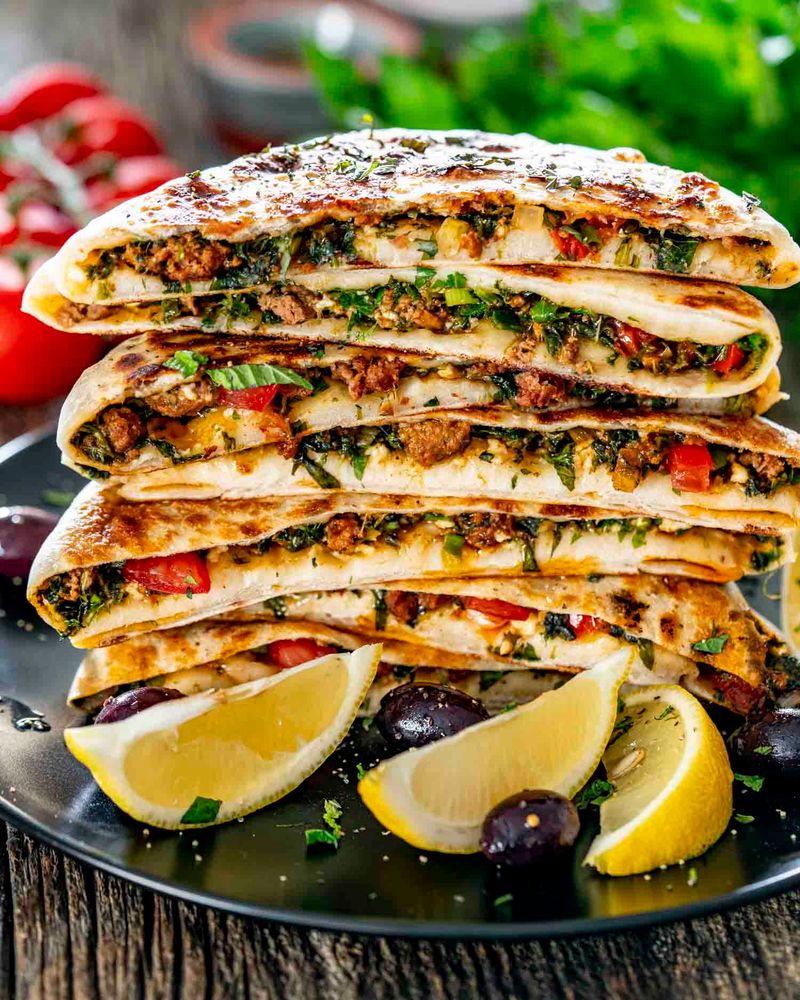
Village women with rolling pins longer than their arms transform simple dough into gossamer-thin sheets for gözleme! These savory filled pancakes represent Turkish home cooking at its finest – rustic, satisfying, and deceptively simple.
The magic happens when the roller (oklava) stretches dough so thin you can see through it before folding around fillings like spinach, cheese, or minced meat. Traditional cooks work with lightning speed, flipping the flatbreads on domeshaped cooking surfaces called saj.
13. Simit
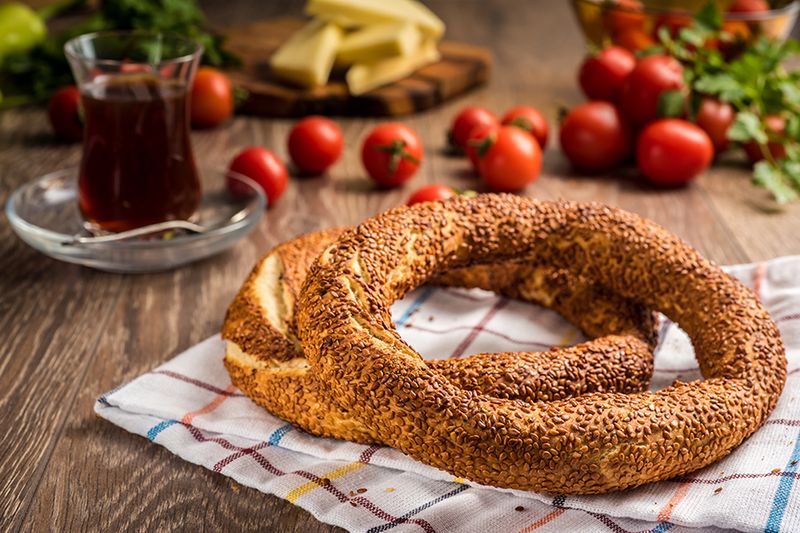
Street vendors balancing towers of these sesame-encrusted rings are Istanbul’s living landmarks! Simit, the circular bread that fuels Turkish cities, combines a crackling crust with a chewy interior that makes it irresistible morning, noon, and night.
The distinctive shine comes from a molasses wash (pekmez) that helps sesame seeds adhere while adding subtle sweetness. Bakers form the rings using a specific twisting technique that creates simit’s characteristic braided appearance.
14. İskender Kebab
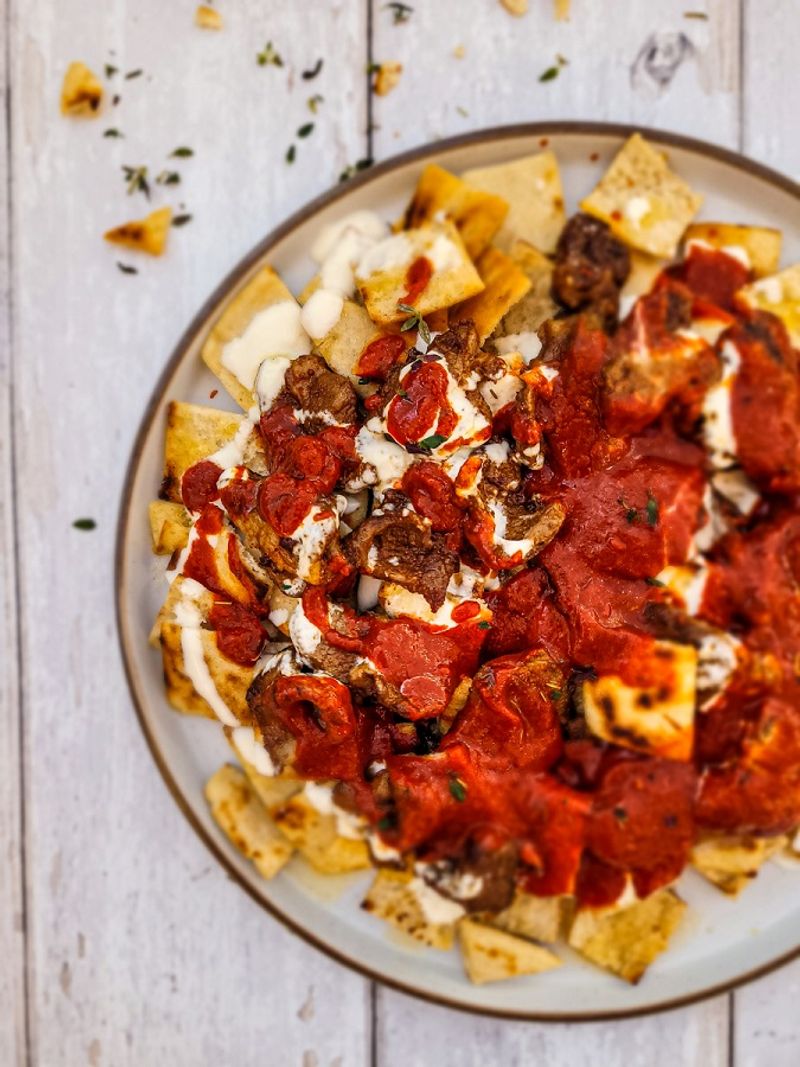
Named after its 19th-century inventor, İskender kebab reigns as Turkish cuisine’s most regal meat creation! Thinly sliced döner meat cascades over pieces of pide bread, creating a foundation for the flavor assault to come.
The magic happens tableside as waiters pour sizzling butter over the meat, creating a dramatic steam cloud scented with browned butter. Tangy tomato sauce and cool yogurt provide temperature and flavor contrasts that make each bite different from the last.
15. Kumpir
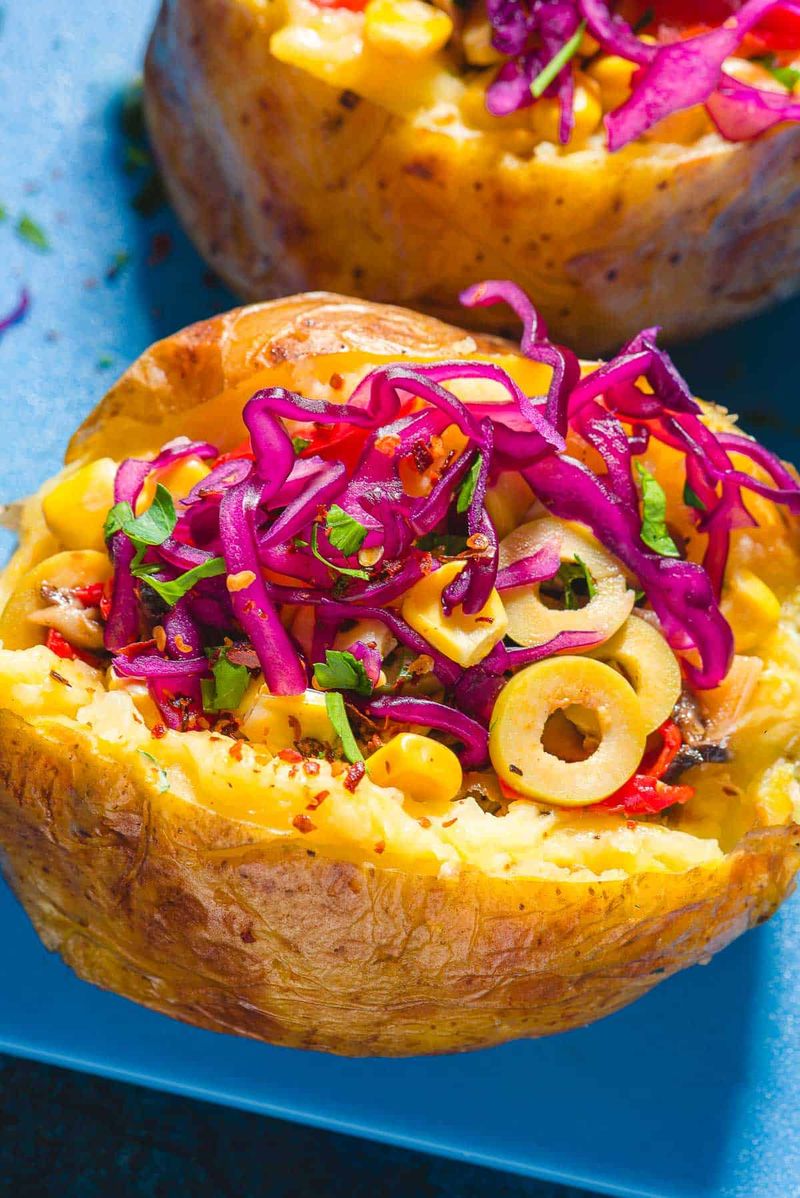
Jacket potatoes on steroids! Kumpir transforms humble baked potatoes into architectural marvels through an elaborate building process that begins with massive Russian potatoes baked until crackling on the outside.
Vendors dramatically split open the potatoes, adding butter and kaşar cheese before mashing the interior into a creamy canvas. Then comes the fun part – customers point to their choices from dozens of colorful toppings: corn, peas, pickles, olives, hot dog pieces, Russian salad, and more.
16. Piyaz
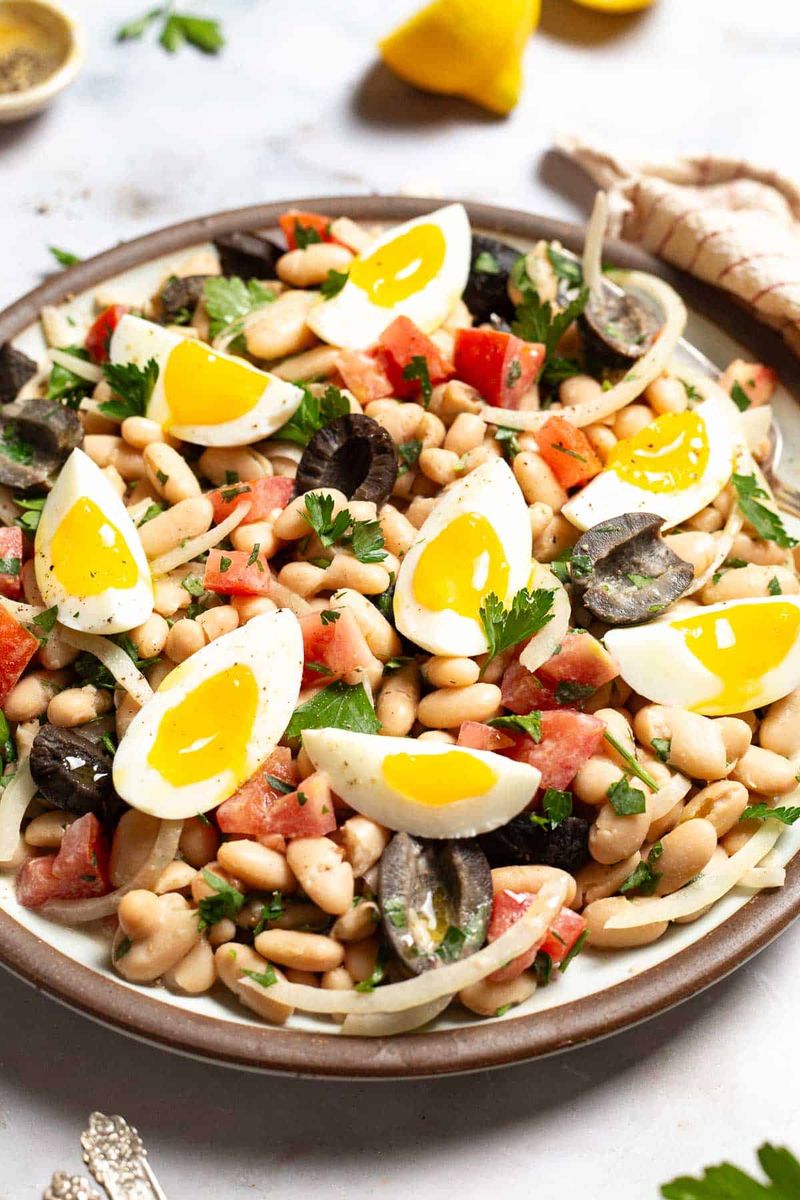
Blindingly white beans gleaming against crimson tomatoes – piyaz salad dazzles the eyes before conquering taste buds! This humble bean salad transcends its simple ingredients through perfect balance and regional variations that spark heated debates.
Antalya’s version includes tahini dressing that transforms the dish completely, while other regions keep it simpler with just lemon and olive oil. Hard-boiled eggs and raw onions add protein and punch to this side dish that often accompanies köfte and other grilled meats.
17. Su Böreği
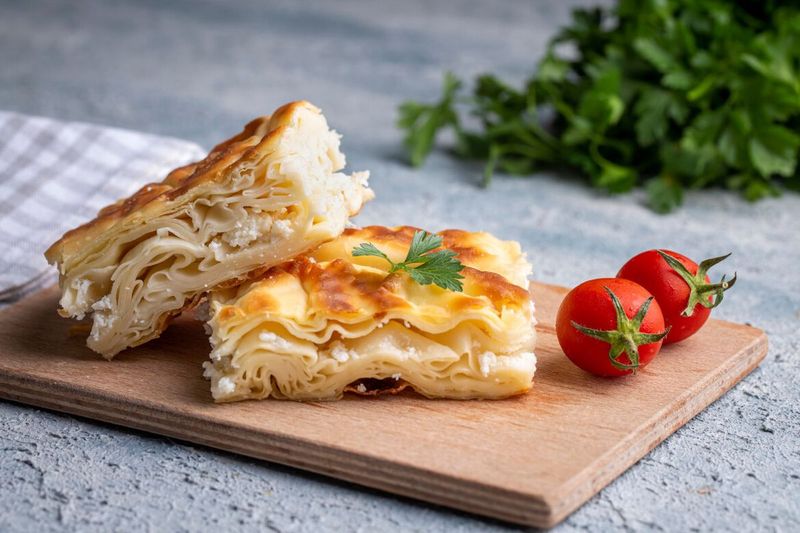
Hours of preparation for mere minutes of consumption – su böreği exemplifies dedication to culinary perfection! This labor-intensive pastry requires boiling sheets of dough before layering them with cheese and herbs.
The name translates to “water pastry,” referencing the unique technique of briefly cooking each paper-thin sheet in water before building the final dish. This process creates distinct layers that remain separate even after baking, unlike other börek varieties that fuse together.
18. Mercimek Çorbası
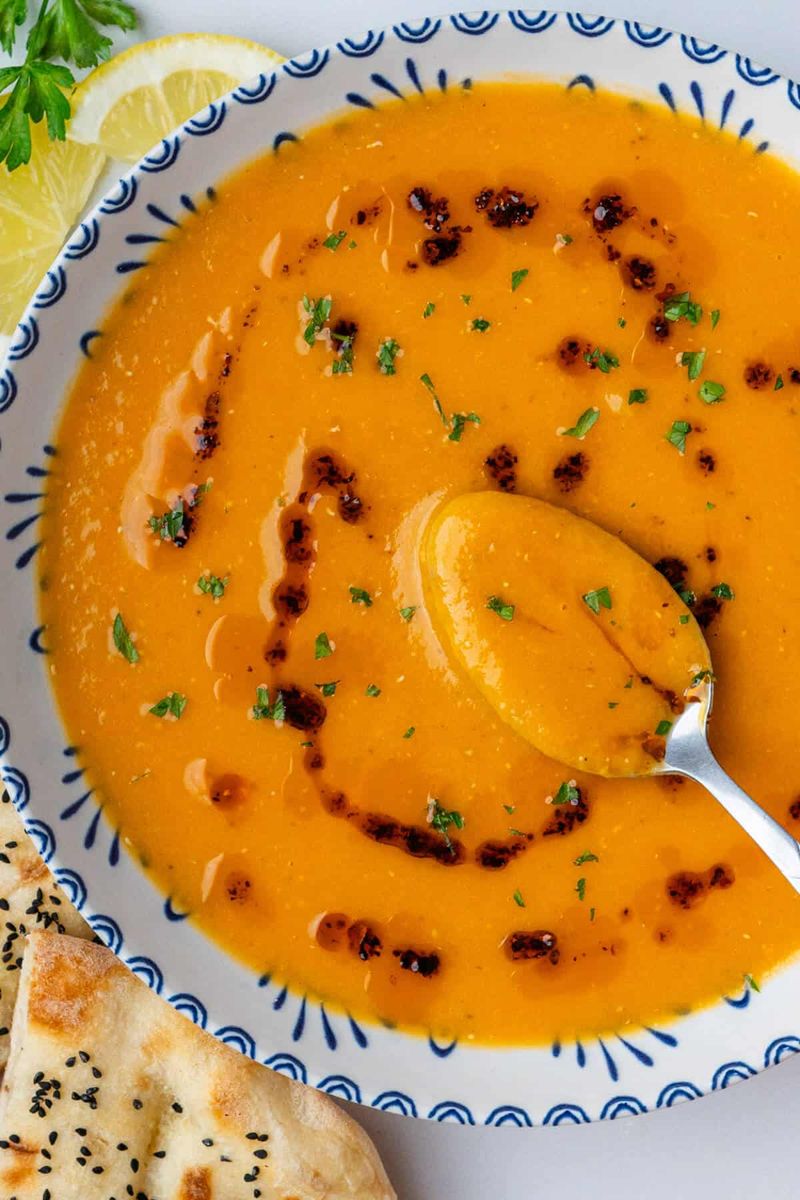
Red lentils dissolving into liquid sunshine – mercimek çorbası opens countless Turkish meals with its velvety embrace! This humble soup transcends its simple ingredients through slow transformation of lentils into a smooth puree.
The secret weapon? A finishing drizzle of browned butter infused with dried mint and red pepper flakes that creates an aromatic oil slick atop each bowl. Winter evenings in Turkey aren’t complete without steaming bowls of this sunset-colored soup accompanied by crusty bread for dipping.
19. Lokum
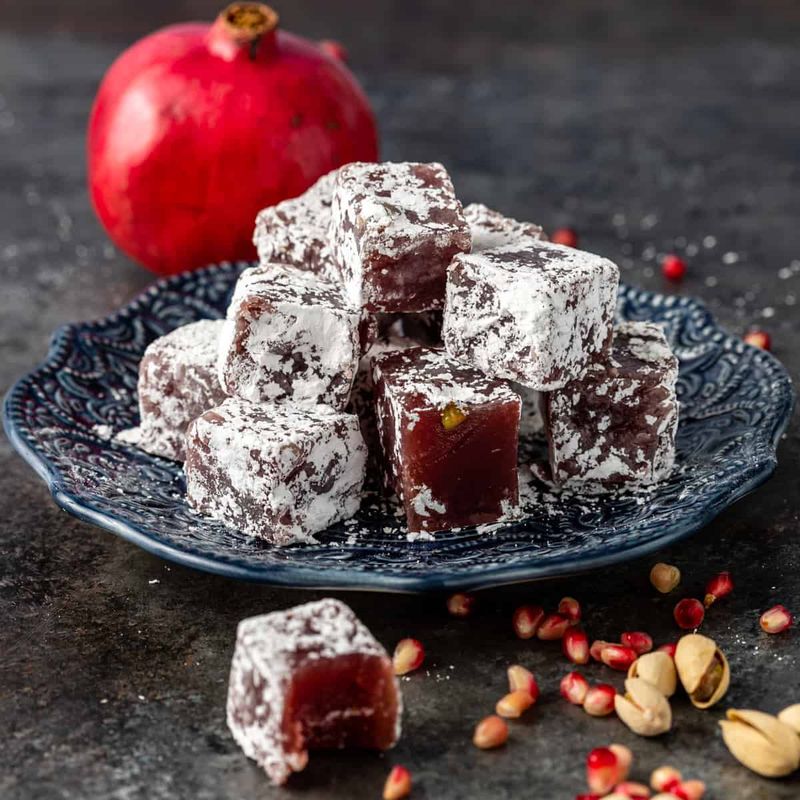
Jewel-toned cubes dusted with powdered sugar – lokum’s appearance is matched only by its fascinating texture! This iconic sweet perfumed with rosewater, orange blossom, or mastic has bewitched visitors to Turkey for centuries.
The science behind lokum involves precise sugar syrup cooking and starch binding to create that distinctive chewy-yet-tender consistency. Traditional flavors include rose, lemon, and pistachio, though modern confectioners experiment with pomegranate, coffee, and even chocolate variations.
20. Ayran
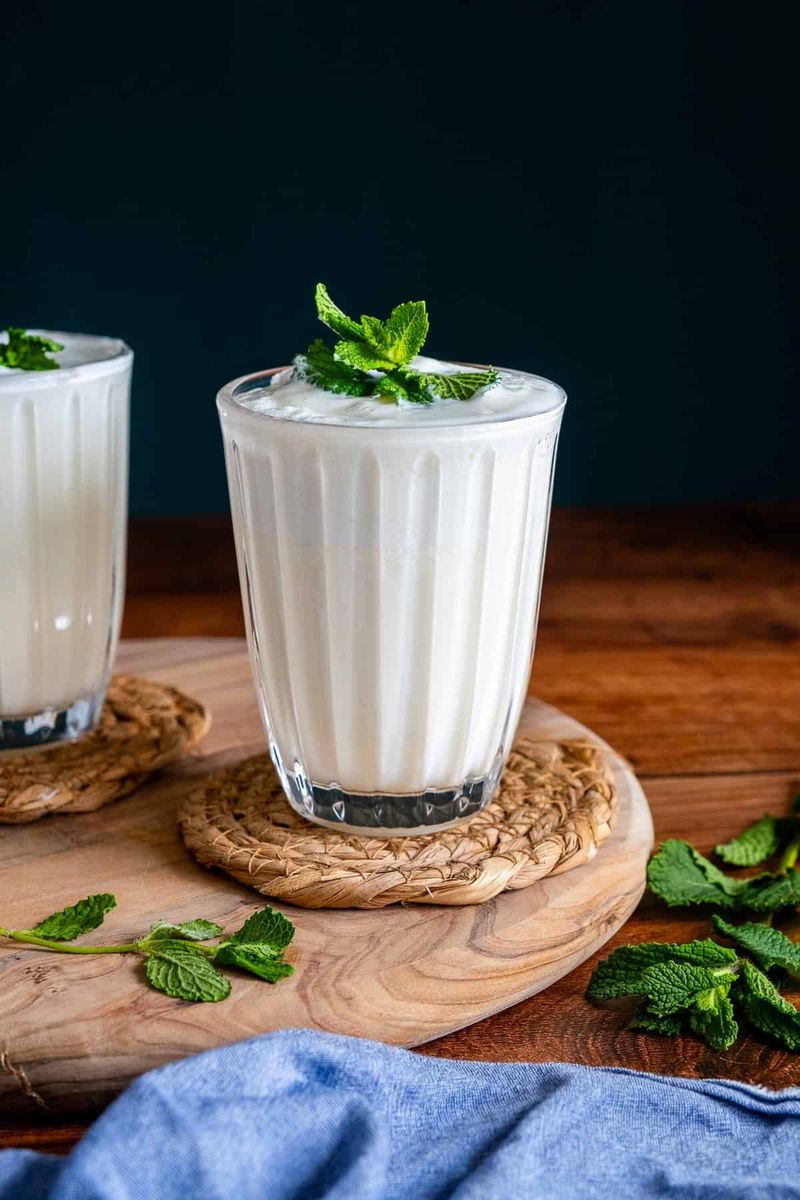
Frothy, salty, and ice-cold – ayran defies Western expectations of what a yogurt drink should be! This simple mixture of yogurt, water, and salt becomes Turkey’s national defense against scorching summer temperatures.
Traditional preparation involves vigorously whisking the ingredients in a tall container until a foamy head forms on top – the mark of properly made ayran. Street vendors perform theatrical pours between containers from increasing heights to generate maximum froth.

